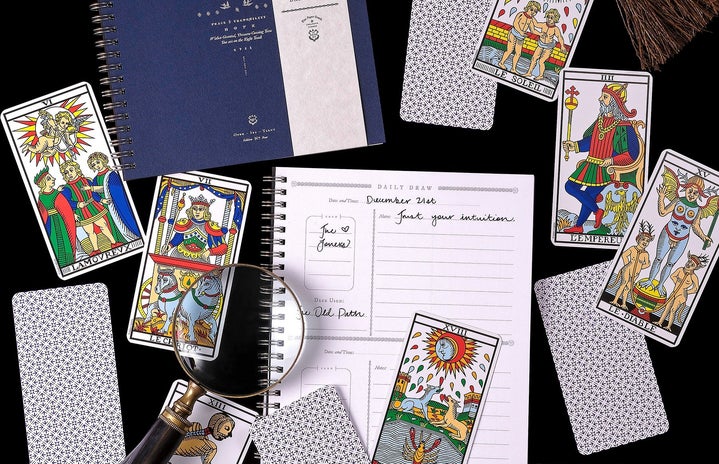Tarot cards were originally used as playing cards in the 14th century, but it wasn’t until the 16th century that the cards were used for divination. I started reading tarot three years ago and fell in love with the practice. Although a divination practice, anyone of any religion or spiritual practice can learn. There is no right or wrong way to learn how to read tarot, but the task of learning can be daunting. If you have ever had interest in learning how to read tarot cards and don’t know where to begin, these are four steps I recommend to guide you along the way.
Step one: Acquire a tarot deck
Many people will tell you that you have to be gifted your first tarot deck… that’s a myth. I highly recommend picking a deck that you feel most called to.
Using the traditional Rider-Waite Tarot deck can be helpful when learning the meanings of cards. However, I recommend visiting your local metaphysical shop and picking out a deck that you feel connected to.
Step two: Build a relationship with your tarot deck
This can be as simple as holding and shuffling your deck. I personally like to cleanse my deck with incense or crystals, and then begin shuffling while focusing my energy into the deck. If cards fall out, this can be your opportunity to start learning, or you can simply put them back and keep getting to know your tarot deck.
Step three: Learning the cards
The most relaxed way to learn tarot is by giving yourself readings. The easiest way I have found to do this is by repeating step two and instead of putting the cards back that have fallen out, leave them out and learn. If your deck came with a guide book, you can use that to read the meaning of the card(s) that you pulled. However, guide books typically only give brief and general descriptions. I recommend using websites like Biddy Tarot, The Tarot Guide, or Labyrinthos. These websites give the meanings of the cards for upright, reversed, and for different types of readings (i.e. financial, relationships, career etc). When reading these descriptions, I found it helpful to write the meanings down in a journal. While you are still learning, you can give your friends readings like this as well. Eventually, you will have a good grasp on the meanings of the cards. This step can go at whatever pace you would like, and I use this method for giving myself readings even now, to avoid letting my personal biases affect my reading.
Some of my favorite informative books for learning cards are Seventy-Eight Degrees of Wisdom: A Tarot Journey to Self-Awareness, Guided Tarot, and How to Read Tarot: A Modern Guide.
Step 4: Developing intuition
This comes very naturally for some, but maybe not for others. Once you have a grasp on your card meanings, the best way to test your skills and intuition is to read for people that you don’t know. When I started, I always brought my cards to a party and did tarot readings for strangers. This is when you use your intuition to decipher the cards for that specific person’s situation. Your prior knowledge on the cards’ meanings will be helpful, but your main source of the reading should be your intuition, because each card has several meanings.
There are so many more tools and insights I have to give on reading tarot, but these four steps are designed to be simple and helpful for those just starting out.


